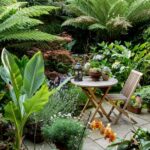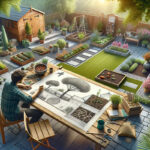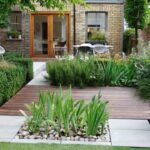When it comes to creating a beautiful and functional garden, size doesn’t always matter. Even with a small outdoor space, there are plenty of ways to maximize its potential by carefully planning the layout. Here are some small garden layout ideas to help you make the most of your limited space.
One of the most important factors to consider when designing a small garden layout is to utilize vertical space. Vertical gardening allows you to grow more plants by using walls, trellises, and hanging baskets. This can free up valuable ground space and create a visually appealing display of foliage and flowers.
Another idea for maximizing a small garden layout is to create different zones within the space. By dividing the garden into areas for dining, lounging, and planting, you can make the most of every square inch. This also helps to create a sense of flow and organization in the garden.
To add interest and height to a small garden, consider using raised beds or planters. Raised beds not only provide better drainage for your plants but also create visual interest and a focal point in the garden. Planters can be placed strategically around the space to add pops of color and texture.
When planning a small garden layout, it’s important to consider the scale of the plants and features you choose. Opt for smaller plants and minimalist design elements to create a sense of spaciousness in the garden. Avoid overcrowding the space with too many plants or bulky furniture, as this can make the garden feel cluttered and closed in.
If you have limited space, container gardening is a great option for adding greenery and color to your garden. Containers can be placed on patios, balconies, or even on small plots of land. Choose a variety of plants with different heights, colors, and textures to create a visually interesting display.
Lastly, consider incorporating elements of symmetry and balance into your small garden layout. Symmetrical designs can help create a sense of order and harmony in the space, making it feel more organized and tranquil. Balance different elements, such as plant types, colors, and textures, to create a cohesive and visually appealing garden layout.










